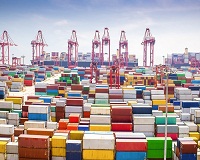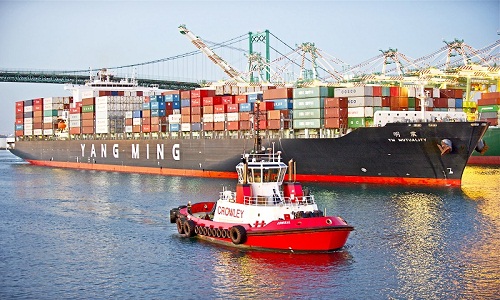Free imports not only expand production quickly but also boost the purchasing power of consumers by allowing them to buy high-quality goods at low price. If trade flow is unhindered, the law of comparative advantage forces countries to specialise and trade in products they have some competitive advantage in. This benefits consumers and producers of both exporting and importing countries.
 Economists across the world are at loggerheads with policymakers on whether countries should impose import duty on specific products to regulate imports? While many countries, including India, are actively considering such measures, economists argue governments should refrain from regulating trade flows.
Economists across the world are at loggerheads with policymakers on whether countries should impose import duty on specific products to regulate imports? While many countries, including India, are actively considering such measures, economists argue governments should refrain from regulating trade flows.
Free imports not only expand production quickly but also boost the purchasing power of consumers by allowing them to buy high-quality goods at low price. If trade flow is unhindered, the law of comparative advantage forces countries to specialise and trade in products they have some competitive advantage in. This benefits consumers and producers of both exporting and importing countries.
Incentives for comparative advantage
China has repeatedly proved that comparative advantage, in most cases, can be developed in a short period by offering several incentives. In the 1980s, China had no domestic electronics and computer industry and imported everything for meeting local needs. The country decided to implement a shrewd production strategy. It attracted MNCs to set final assembly units in China by offering them low-cost land, power, water, labor, tax exemptions, and an efficient customs administration. MNCs were allowed to import all inputs through the ‘global value chain’ model of shared production.
offering several incentives. In the 1980s, China had no domestic electronics and computer industry and imported everything for meeting local needs. The country decided to implement a shrewd production strategy. It attracted MNCs to set final assembly units in China by offering them low-cost land, power, water, labor, tax exemptions, and an efficient customs administration. MNCs were allowed to import all inputs through the ‘global value chain’ model of shared production.
Raw materials and low-end components for these units were sourced from ASEAN and while the components requiring advance manufacturing came from Japan, Korea and Taiwan. This model made China the leading exporter of electrical machinery, electronic items and telecom equipment by 2005. In the next phase of growth, the country reduced its dependence on the GVC model by manufacturing everything needed in-house. China applied a similar strategy for organic chemicals and electrical machinery to emerge a world leader.
High import duties impending growth
While average import duties are low for many developed countries, the US, the EU and most other developed countries charge high import duty on products of interest to developing countries and grant calibrated access only. The EU and the US charge 10-20 per cent import duty on Indian apparel and shoes. Japan charges 300 per cent duty on rice. Many European countries charge seasonal import duties on agriculture products.
Total import duty on some types of steel in the US and EU exceeds 100 per cent. South Korea is an excellent example of export-led development, but in most sectors it imposes high import duties and non-tariff barriers. The US is fast approaching a point where it would impose extra 25 per cent import duty on all goods coming from China. And, China is mechanically retaliating by doing the same.
Strategy need for import substitution
Action is also needed to reduce over-reliance on a country on products related to health, food or national security. For instance, India imports over 90 per cent of its requirement of Active Pharmaceutical Ingredients (APIs) from China. Realising this, China sharply increased prices in the past two years. India therefore, needs an urgent strategy for import substitution.
China accounts for more than 95 per cent of Indian imports for items such as blankets, bed linen, artificial flowers, kitchenware, baby carriages, clock movements, tricycles, festival items, combs, vacuum flasks, candles, etc. As these are low technology, labour-intensive products, they can be manufactured even locally.
No alternative to innovation
Indeed import substitution cannot be an option to innovation. For instance, a high-technology product like a driver-less car can only be produced in a country that has with in-depth institutional knowledge of precision fabrication, electronics, robotics, design, IT and many more streams, it cannot be manufactured in countries like Brazil, India or China. Quick comparative advantage cannot be developed in a short period for such products through import substitution.












